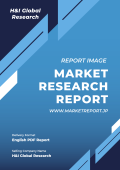Chapter 1. Executive Summary
1.1. Market Snapshot
1.2. Global & Segmental Market Estimates & Forecasts, 2019-2029 (USD Billion)
1.2.1. Roasted Coffee Market, by Region, 2019-2029 (USD Billion)
1.2.2. Roasted Coffee Market, by Type,2019-2029 (USD Billion)
1.2.3. Roasted Coffee Market, by Distribution Channel, 2019-2029 (USD Billion)
1.3. Key Trends
1.4. Estimation Methodology
1.5. Research Assumption
Chapter 2. Global Roasted Coffee Market Definition and Scope
2.1. Objective of the Study
2.2. Market Definition & Scope
2.2.1. Scope of the Study
2.2.2. Industry Evolution
2.3. Years Considered for the Study
2.4. Currency Conversion Rates
Chapter 3. Global Roasted Coffee Market Dynamics
3.1. Roasted Coffee Market Impact Analysis (2019-2029)
3.1.1. Market Drivers
3.1.1.1. Rising Preference among the youth.
3.1.1.2. Various Health Advantages.
3.1.2. Market Challenges
3.1.2.1. Lower Shelf Life of the Product.
3.1.3. Market Opportunities
3.1.3.1. Advancements in Formulation.
3.1.3.2. Growing Number of Product Launches.
Chapter 4. Global Roasted Coffee Market Industry Analysis
4.1. Porter’s 5 Force Model
4.1.1. Bargaining Power of Suppliers
4.1.2. Bargaining Power of Buyers
4.1.3. Threat of New Entrants
4.1.4. Threat of Substitutes
4.1.5. Competitive Rivalry
4.2. Futuristic Approach to Porter’s 5 Force Model (2019-2029)
4.3. PEST Analysis
4.3.1. Political
4.3.2. Economical
4.3.3. Social
4.3.4. Technological
4.4. Investment Adoption Model
4.5. Analyst Recommendation & Conclusion
4.6. Top investment opportunity
4.7. Top winning strategies
Chapter 5. Risk Assessment: COVID-19 Impact
5.1. Assessment of the overall impact of COVID-19 on the industry
5.2. Pre COVID-19 and post COVID-19 Market scenario
Chapter 6. Global Roasted Coffee Market, by Type
6.1. Market Snapshot
6.2. Global Roasted Coffee Market by Type, Performance – Potential Analysis
6.3. Global Roasted Coffee Market Estimates & Forecasts by Type 2019-2029 (USD Billion)
6.4. Roasted Coffee Market, Sub Segment Analysis
6.4.1. Arabica
6.4.2. Robusta
Chapter 7. Global Roasted Coffee Market, by Distribution Channel
7.1. Market Snapshot
7.2. Global Roasted Coffee Market by Distribution Channel, Performance – Potential Analysis
7.3. Global Roasted Coffee Market Estimates & Forecasts by Distribution Channel 2019-2029 (USD Billion)
7.4. Roasted Coffee Market, Sub Segment Analysis
7.4.1. B2B
7.4.2. B2C
Chapter 8. Global Roasted Coffee Market, Regional Analysis
8.1. Roasted Coffee Market, Regional Market Snapshot
8.2. North America Roasted Coffee Market
8.2.1. U.S.Roasted Coffee Market
8.2.1.1. Typebreakdown estimates & forecasts, 2019-2029
8.2.1.2. Distribution Channel breakdown estimates & forecasts, 2019-2029
8.2.2. CanadaRoasted Coffee Market
8.3. Europe Roasted Coffee Market Snapshot
8.3.1. U.K. Roasted Coffee Market
8.3.2. Germany Roasted Coffee Market
8.3.3. France Roasted Coffee Market
8.3.4. Spain Roasted Coffee Market
8.3.5. Italy Roasted Coffee Market
8.3.6. Rest of EuropeRoasted Coffee Market
8.4. Asia-PacificRoasted Coffee Market Snapshot
8.4.1. China Roasted Coffee Market
8.4.2. India Roasted Coffee Market
8.4.3. JapanRoasted Coffee Market
8.4.4. Australia Roasted Coffee Market
8.4.5. South Korea Roasted Coffee Market
8.4.6. Rest of Asia PacificRoasted Coffee Market
8.5. Latin America Roasted Coffee Market Snapshot
8.5.1. Brazil Roasted Coffee Market
8.5.2. MexicoRoasted Coffee Market
8.6. Rest of The World Roasted Coffee Market
Chapter 9. Competitive Intelligence
9.1. Top Market Strategies
9.2. Company Profiles
9.2.1. Nestlé
9.2.1.1. Key Information
9.2.1.2. Overview
9.2.1.3. Financial (Subject to Data Availability)
9.2.1.4. ProductSummary
9.2.1.5. Recent Developments
9.2.2. Starbucks Coffee Company
9.2.3. JDE Peet’s
9.2.4. Tchibo Coffee
9.2.5. LUIGI LAVAZZA SPA
9.2.6. Strauss Coffee BV
9.2.7. The J.M. Smucker Company
9.2.8. Melitta
9.2.9. UCC UESHIMA COFFEE CO., LTD.
9.2.10. Massimo Zanetti Beverage USA
Chapter 10. Research Process
10.1. Research Process
10.1.1. Data Mining
10.1.2. Analysis
10.1.3. Market Estimation
10.1.4. Validation
10.1.5. Publishing
10.2. Research Attributes
10.3. Research Assumption











